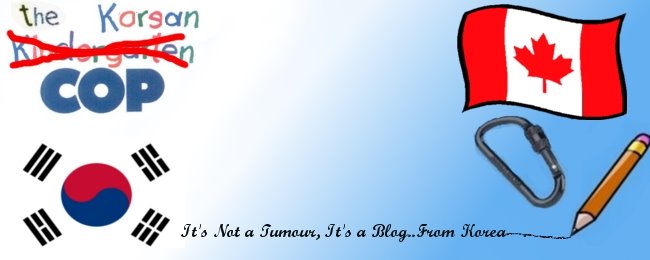Day 3 of my trip called for another early morning rise and a train trip to Gyeongju. Before I left I said my good-byes to Mr. and Mrs. Kim and Mr. Kim's parents. I also try out my new Korean phrase, "I will miss you," which prompted Mr. Kim's mother to call me "sweet."
Today (Saturday, May 2) is Buddha's Birthday in Korea. When I ordered the tickets last week there was only one spot left on the KTX train for this day and it was in First Class. What a pity.
I was excited to see what a first class train ride would be like, but unfortunately it was a bit disappointing. There was so much leg room that my feet could not reach the foot rests no matter how far I stretched, which was rather uncomfortable. Furthermore, the seat in front of me was so far away that the fold down tray was out of my reach and so I had to bend over awkwardly to use it. This was not the most comfortable position either.
On the plus side, I could get out of the seat without putting the tray up and, with the combination of an a/c unit that actually worked and 25% less people in the car (only three seats per row instead of 4), I made it all the way to my destination without feeling like I had been sitting in a pool of sweat the whole way.
Part way through the trip, I had to switch from the KTX train to the much less glamorous, or speedy, Mugungwha train (astute readers will remember that Mugungwha is also the name of Korea's national flower).
At least the scenery at the platform where I disembarked was nice.
Eventually April and I got to Gyeongju. I originally took this picture because I thought it looked pretty, but upon reviewing my pictures later I realized that I had actually learned the meaning of the sign on the left during my trip (in an unrelated incident). The writing in the red circles on the pillar reads "hwan-yong," which means "welcome!"
After trying to find a reliable form of transport (the buses we needed were not coming around at an acceptable interval for two impatient Seoulites), April and I took a cab to meet her friend, Sun-hee and her friend's daughter, Jee-seon.
The four of us went to a traditional Korean restaurant, at which to enter we had to squeeze through a door only five feet high. We tried not to bump our heads ("try" being the operative term), and were rewarded for our troubles with a delicious meal of spicy barbecued chicken and ddeok in a some sort of hot sauce. Actually, now that I think about it, I'm pretty sure that this is the same meal I ate with my boss on Thursday before I got paid and left for this trip.
After lunch we all drove over to Bulguksa. Bulguksa is a Buddhist temple ("sa" means temple) built in the wooded foothills of beautiful Tohamsan ("san" means mountain in Korean, so Tohamsan translates to Toham Mountain). Many invading countries liked to arrest Buddhist monks, so the monks often built their temples in the mountains to hide from enemy armies.
Bulguksa was built roughly 1480 years ago in AD 528, during the Shila dynasty. Unfortunately, the Japanese appear to like burning down temples more than the monks like hiding them up in the mountains, and so Bulguksa also had to be rebuilt after the 1592 Invasion of Korea by Japan (the second temple this trip).
In 1995 UNESCO (a branch of the United Nations) declared Bulguksa a World Cultural Heritage site. Bulguksa contains no less than seven National Treasures, and it is also located in the most beautiful place I've ever seen, and is reached by Korea's best driving road (that's the most important thing though, isn't it?) Bulguksa is often referred to as "a museum without walls."
Before you can reach the temple, you must walk over this bridge (behind the trees). The bridge is called Haetalgyo, and it represents the crossing from the sin filled world to the realm of bliss - Nirvana.
Every reader has seen the giant rock piles from my hiking trip with Perry, right? Here we have hundreds of tiny rock piles built by visitors behind one of the temple buildings. There must have been a lot of praying here.
Of the seven National Treasures, these were my two favourite. The first is Seokgatap, a classic Korean pagoda of superior quality. The second is Cheongungyo and Baegungyo, which combine to make a massive 33-step stone staircase that represents the 33 heavens and hells of Buddhism.
After a wonderful exploration of Bulguksa, we all went out for yet more spicy Korean food. This time the meal was a spicy bowl of soup containing a number of vegetables and a whole fish, merely gutted, but not deboned or beheaded. Lucky me, I got the fish head again. It had received a debraining, but I was still able to play with its mouth. In hindsight, I think perhaps playing with one's fish head at the dinner table is not something that Korean dining etiquette encourages.

No comments:
Post a Comment